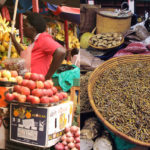Uganda’s inflation rose slightly to 5.3 percent year-on-year in September, up from 5.2 percent a month earlier, the Uganda Bureau of Statistics (UBOS) said in its latest monthly report released over the weekend. This represents a 0.1 percentage point increase from the previous month.
UBOS in its report said core inflation, which excludes food, electricity and metered water, rose up to 4.2 percent during the period, up from 4.1 percent in August. This was driven by the increase in the prices of services which rose to 4.1 percent compared to 3.3 percent recorded for the year ended August 2017.
The Annual Energy, Fuels and Utilities (EFU) Inflation registered 10.6 percent for the year ending September 2017 compared to 7.8 percent recorded for the year ended August 2017. This was driven by the low supply of charcoal & firewood, whose inflation increased to 15.0 percent for the year ending September 2017 compared to 7.1 percent recorded for the year ended August 2017 .
However, inflation for liquid energy fuels declined to 5.5 percent for the year ending September 2017 compared to 5.7 percent recorded in August 2017.
The Annual food crops inflation declined to 9.6 percent for the year ending September 2017 compared to the 11.7 percent recorded for the year ended August 2017. This was attributed to the decline in the prices of fruits.
Arua registered the highest annual inflation of 9.0 percent in September 2017 compared to 8.9 percent recorded in August 2017. This was attributed to price increases in items such as furnishings, household equipment, clothing and foot wear. Annual inflation was also high in Fort Portal and Gulu due to high prices of food and non-alcoholic beverages.







